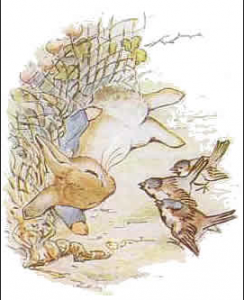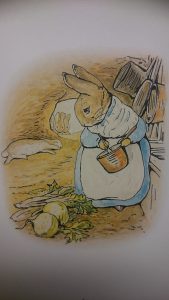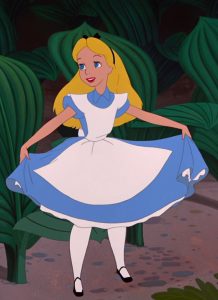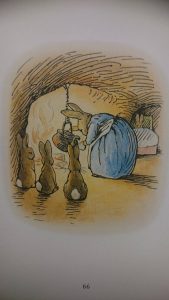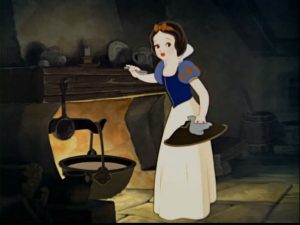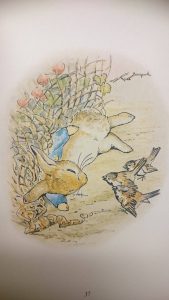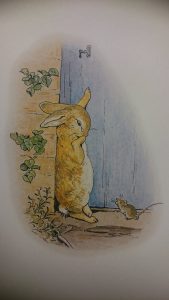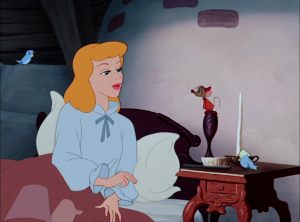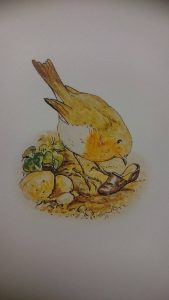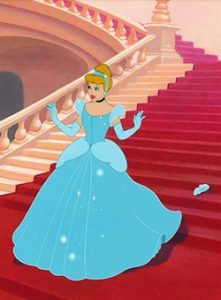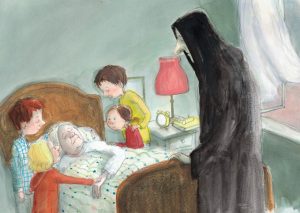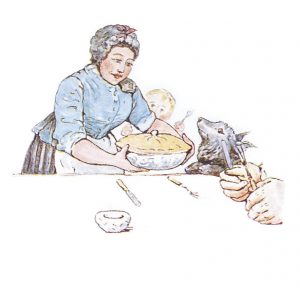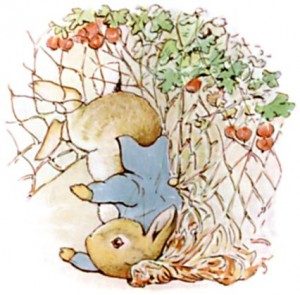I remember hating Peter Rabbit when I was young. I couldn’t pinpoint why, but all I knew was that something about the story made me feel off, a little uncomfortable. No matter how much my dad pushed the story on me (it’s his favorite book), I would refuse to listen when he read the story to my brother and sister.
A kid feeling scared of Peter Rabbit? It just didn’t make sense to my parents, especially when that kid loved Tim Burton movies, and wore a choker every day pretending to be the girl with the green ribbon from In a Dark, Dark Room and Other Scary Stories.
It’s interesting rereading Peter Rabbit as an adult. I still don’t feel very comfortable with the story, but unlike when I was in preschool, I know think I can explain why.
I’ll begin with a comparison to explain – the images from Edward Gorey’s Amphigorey are the types of images that should inspire fear in the reader. But, because their are no images of clear pain, no detailed facial expressions of pain or fear from the characters, I sympathize less. These are characters. They don’t have feelings. I can accept the stories as they are – just stories.
But now, looking at Peter Rabbit, there are moments when we get a detailed look at Peter – his fear, turmoil, and loss of hope. You can see tears in his eyes. Birds seemingly laugh at his struggle and pain. I understand Peter’s pain, more than I can understand the pain of the character’s in Amphigorey because I feel like I have been in a similar situation. Peter’s pain feels real and I hate seeing him in distress.
Ironically, when looking at all the books we have analyzed this semester, Peter Rabbit is the “scariest” book yet. Even though the book has no aspects of horror (like that in Gorey’s stories), even though the book is intended as a bedtime story for young children, I find the book disturbing because no one, not one person or animal, comes to Peter’s rescue. In my opinion, Peter Rabbit paints an uncaring and unloving world that we must learn to navigate because, when push comes to shove, no one will be there to offer support in times of trouble.

